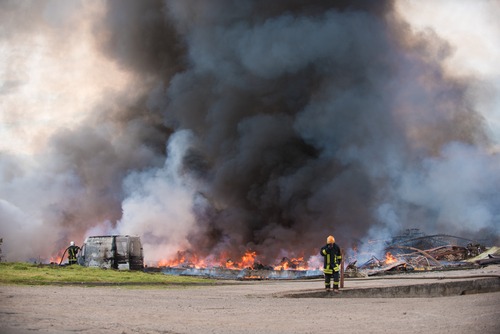
Compressed Gas Accidents
The Occupational Safety and Health Administration is one of the best sources for work safety laws, regulations, and information on accidents. In fact, since the early 2000s, OSHA has been documenting accidents regarding a very specific accident type, those that stem from compressed gases. In some of these accidents, employee’s fingers became amputated, injured in explosions, and even killed. For instance, one worker in 2007 was killed when he was refueling his van. The employee walked to the back of the van and knelt down by the tank and, when he did, the tank exploded and ripped the bodywork and metal bumper off the van. The employee was struck and was thrown approximately 40 feet across the tarmac, where he sustained massive trauma and died.
How do Compressed Gas Accidents Occur?
In the construction workplace, workers use different types of compressed gas in order to complete various projects despite the fact that it can pose risks. Every year, thousands of workers are injured in these accidents that could have been prevented. This is mainly due to the fact that the compressed gases that are kept on construction sites are both pressurized and flammable. There is enough potential energy built up from compressing the gas into a container that is poses a very significant threat. If there is a crack in the vessel, it could turn into a rocket right in front of a worker’s eyes. Commonly used hazardous compressed gases can include Butane, Ethylene, Hydrogen, Oxygen, Helium, and Argon. It may be dangerous because it can be combustible, explosive, corrosive, poisonous, and inert.
When workers are involved in an accident involving compressed gases, there are many injuries they may receive. Burns, of course, are one of the most common injuries stemming from these accidents due to the fact that gas pressure increases when gas is heated. Despite that many workers will be wearing protective gear, they could still become severely burned within seconds. They may also experience asphyxiation, chemical burns and chemical poisoning.
Proper Safety Measures
How can compressed gas accidents be avoided? Here are some of the safety precautions that can be taken to avoid accidents and injuries:
- A worker should always wear personal protective equipment that may include safety glasses, gloves, and hard-toed shoes when working around or with compressed gas cylinders. Aside from the fact that the cylinder could become a projectile, falling cylinders could also land or roll on your foot, which can cause broken bones.
- Always secure cylinders upright so that they cannot move, even when you are traveling in a truck.
- Never heat a cylinder or allow hand tools to come into direct contact with the frozen cylinder.
- You should always inspect compressed gas cylinders by looking for burn marks, dents, or corrosion. Also check to see if the valve cap is attached and contents are properly labeled.
- Once the cylinder cap is removed, you should always inspect for odors, visible plumes, or hissing sounds.
- Make sure that cylinders are stored in a fire-resistant area that is well ventilated and cool as well as dry. Wherever the storage is, a fire extinguisher should be kept and there should be an emergency response plan in place of a fire event.
Compressed gas cylinders are very common in the construction workplace but can actually pose many dangers. To avoid burns, explosions, and more, proper precautions should always be taken. However, even so, many accidents will continue to happen in workplaces over the next year and so forth. If you have become injured as a result of compressed gas, you may have a case. Call an attorney who can help you with your personal injury needs today. At Maggiano, DiGirolamo & Lizzi, we have the experience you need in your construction claim.


















